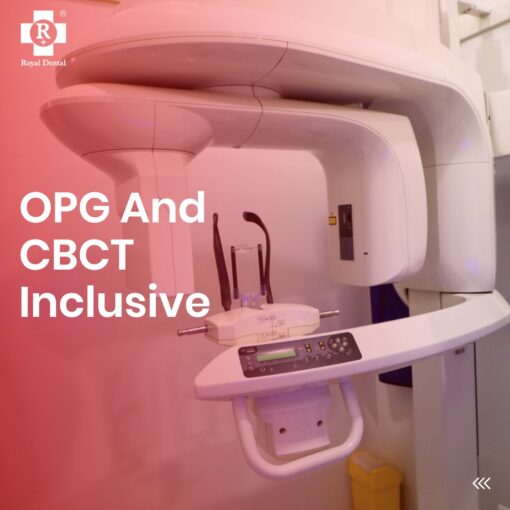It’s a common misconception that dentists can diagnose only using x-rays and not by physically examining patients. However, the truth is that dentists have been diagnosing their patients based on physical examination for many years now. They use diagnostic tools such as x rays, visual inspection, and intra-oral cameras to examine teeth and gingival tissues for any signs of disease. There are instances like decay when dentists can only make a diagnosis based on an x-ray image. Let’s find out more about this in this article.
When can a dentist only diagnose based on x-rays?
A dentist can only make a diagnosis based on clinical image if there are certain signs in the mouth that can only be detected on an x-ray. While a dentist can usually detect signs of oral diseases by using visual inspection and intraoral cameras, they cannot do so when specific oral diseases are present. Here are some examples when a dentist can make a diagnosis based mostly on a clinical scan.
If you have a foreign object in your mouth: X-rays are the best way to determine where the object is. A dentist can then decide the best course of action for removal.
If you have an abscessed tooth: An x-ray is the only way to know the extent of the infection and where it is spreading to.
In cases of cysts in your gums: It will show the cysts, even if they are not causing any symptoms. A dentist can then decide on the best course of treatment.
If you have a jaw fracture or cyst: A surgeon can only detect these by taking an OPG scan.
If you have a bite problem: A dentist can only detect a malocclusion (bad bite) by taking an x-ray.
Determining the cause of oral pain based on x-rays
Sometimes, a dentist will recommend a set of xrays to detect the cause of oral pain. For example, if you go to the dentist with a mouth ulcer and swelling in your gums, the dentist will take an x-ray to rule out oral cancer. If you have a toothache, the dentist may take a clinical scan to check for signs of decay or cracks in the teeth. If you have swelling in your jaw or face, an x-ray will help the dentist rule out a jaw fracture or cysts. The dentist may take x-rays if you have persistent pain in the teeth despite using over-the-counter painkillers. This is to rule out the possibility of an infection.

How can a dentist diagnose based on an x-ray?
There are different signs a dentist can look for in an xray to make a diagnosis. Dentists use specific types of x-rays for different oral diseases. For example, a panoramic scan is used to look for signs of jaw fractures and cysts. A bitewing x-ray is used to look for cavities or the extent of tooth discoloration. A periapical x-ray is used to look for signs of infection in the roots of teeth. A bitewing x-ray is an x-ray that shows the top and bottom teeth in an image that can also be flipped horizontally to look at the other side of the mouth.

A periapical scan is an image of the teeth and the root. A panoramic x-ray is an image of the upper and lower teeth, the soft tissue of the cheeks, and the base of the skull. When looking at an OPG scan, a dentist may use special software to enhance the image and look for signs of disease. He may also take into account your medical history to make a diagnosis.
Detecting cavities based on x-rays
To detect cavities in teeth, a dentist may take a panoramic scan and look for areas of tooth decay. He may also take a bitewing x-ray and compare it with the panoramic x-ray to see if there are any areas of decay in the teeth. He may also take a periapical x-ray to see if there are any cavities in the roots of the teeth. There are two types of decay – incipient and symptomatic.
Incipient decay is found in places where the tooth is not exposed to much bacteria like the tooth crown or the root. It is characterized by small holes in the tooth surface that are filled with bacteria and minerals. Diagnosing incipient decay is difficult since there are no symptoms. A dentist can diagnose this only by taking an OPG scan and looking for signs of tooth decay in the tooth’s interior.
Determining the extent of tooth discolouration
To determine the extent of tooth discoloration, a dentist may take a periapical x-ray of your teeth. The periapical x-ray shows the inside of the roots of the teeth. Areas of darker discoloration in the roots may indicate gum disease. A bitewing x-ray can also be taken to help the dentist determine the extent of tooth discoloration.Signs of periodontal disease like discoloration, pockets in the gums, bleeding while brushing, etc. can be seen in the x-rays of your teeth.

A dentist may also take a periapical x-ray and a bitewing scan to see the extent of discoloration.Some patients may present initially with pain. Pain and discoloration can be a result of dental caries, a dentoalveolar infection, deep dental restorations, severe developmental or acquired defects in the enamel or dentin, or trauma that leads to pulpal necrosis.
Summing up
Dentists can make a diagnosis based on a visual inspection, intraoral cameras, and x-rays. They mainly use x-rays to detect signs of oral diseases like a jaw fracture, tooth decay, or an abscessed tooth. A dentist can only make a diagnosis based on an OPG scan if there is a specific sign in the mouth that can only be detected on an x-ray. When diagnosing oral diseases, a dentist will take a panoramic x-ray and a bitewing x-ray. He will also take a periapical x-ray to determine the extent of tooth discoloration.






